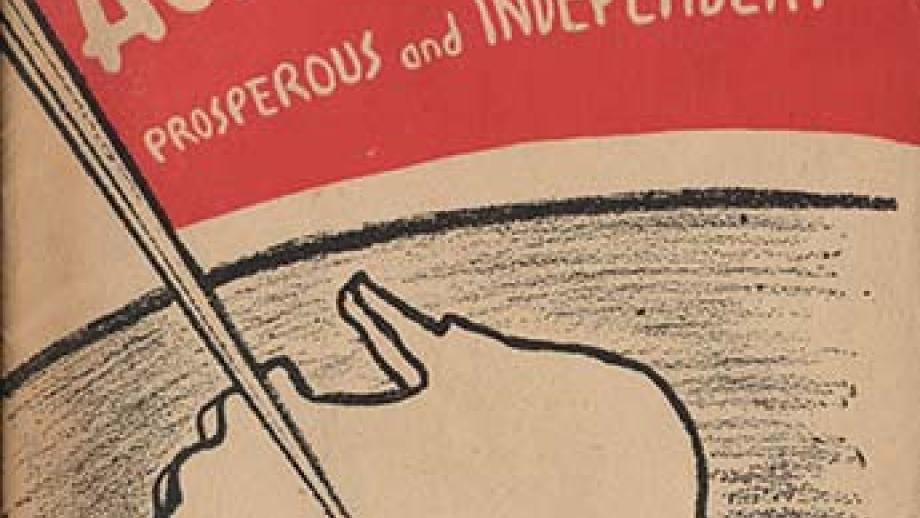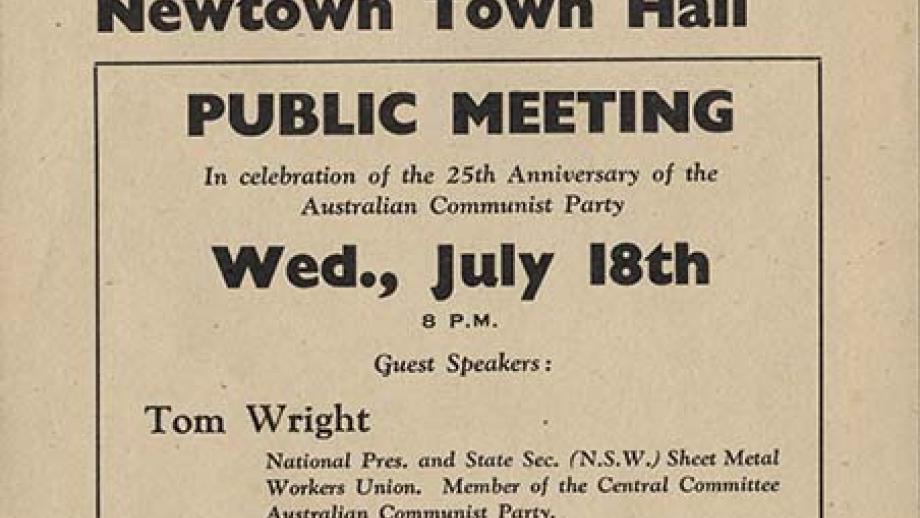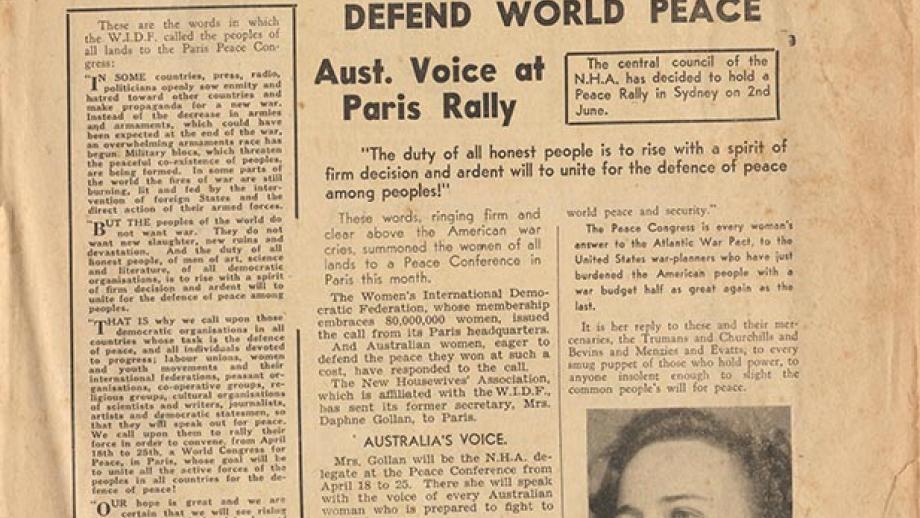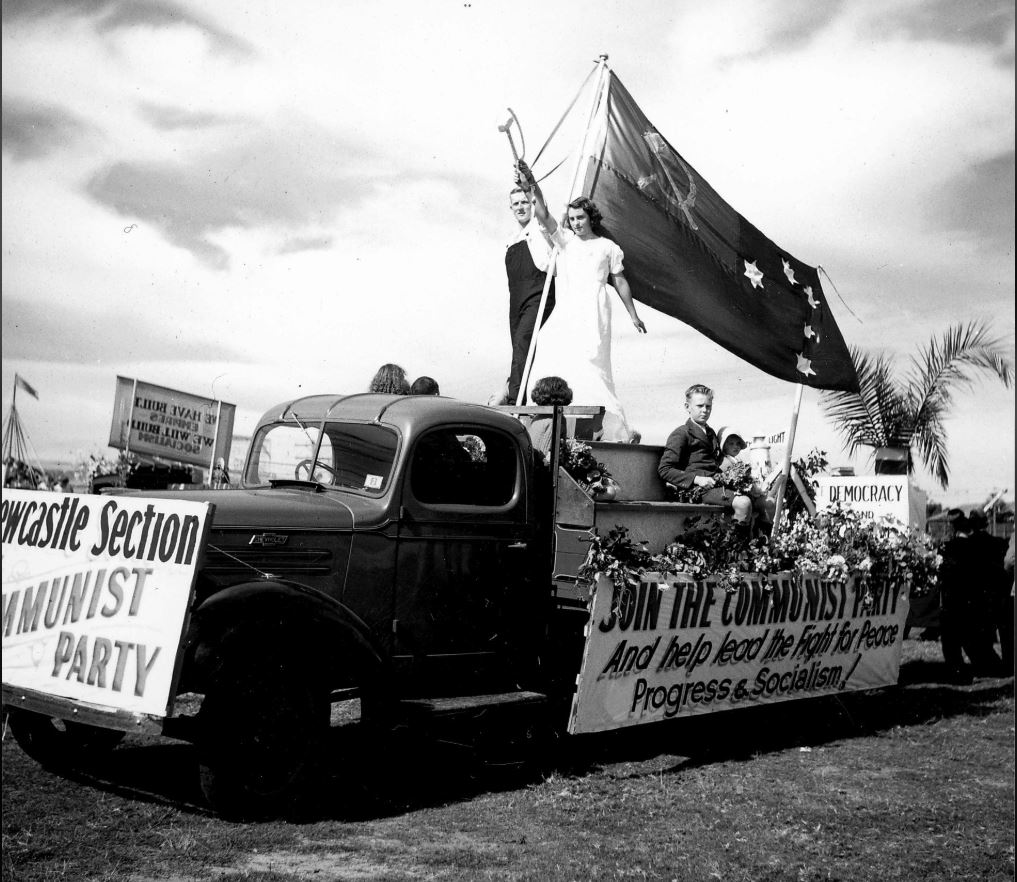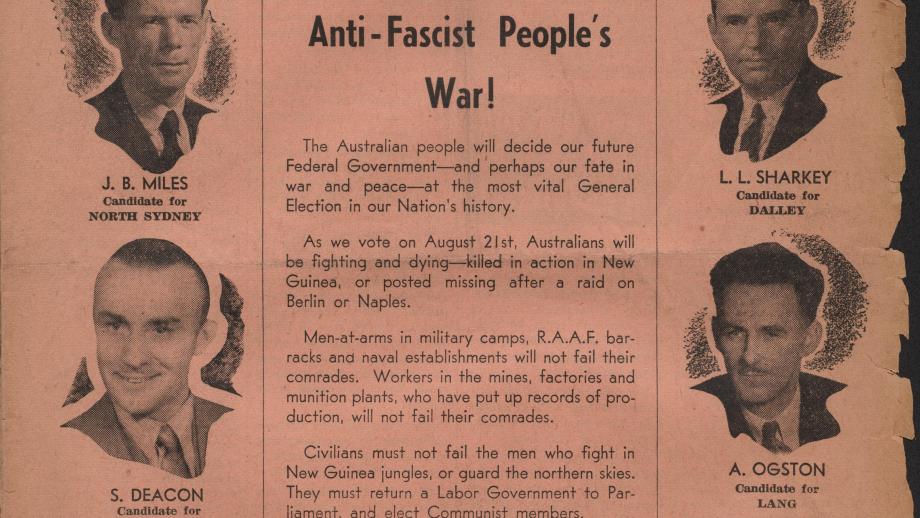From Bust To Boom - The Communist Party in the 1940s
From its inception, the CPA had essentially been considered an enemy of the state, with the government continually seeking to address its influence in Australia. As an organisation committed to socialist revolution and the overthrow of capitalism, the Party and its members had been under regular surveillance for decades and the appetite to ban the Party and curb its influence, continued to grow.
In April 1940 the Menzies Government announced its intention to censor some communist publications. This quickly developed into a total ban on prominent publications including the Tribune, The Communist Review, The Guardian and The Red Star. The ban of the Party seemed imminent and in June 1940 the Menzies Government declared the CPA an illegal organisation under the National Security (Subversive Organisations) Regulations. The Party had anticipated this, and members swiftly went underground, where they continued to operate and distribute literature despite the arrest of some fifty members.
In Victoria, it had been predetermined that lawyer E.F. (Ted) Hill would act as a courier and contact for the Party, distributing orders disguised as legal documents from his office (A Davidson 1969 p.81). Trade unions, and their publications, became critical in keeping the Party going, but nevertheless, this became increasingly difficult as the Party became decentralised and contact with the Comintern became impossible.
In December 1942 the Curtin Labor Government lifted the ban on the Party, with the requirement that the CPA assist with the war effort. The CPA urged members to sustain from strike action and lift wartime production. However, some within the Party were critical of the leadership and what they saw as the Party moving away from its socialist agenda and aligning itself too closely with capitalism and the ALP.
Despite this, as the Second World War continued, membership of the CPA ballooned. By 1945 the CPA controlled 275,000 of the 1.2 million registered trade unionists and it was estimated that the Party had the support of between 25-40% of trade union members (A Davidson 1969 p.93). The CPA also had its first parliamentarian, barrister Fred Paterson, who had won the Queensland seat of Bowen in 1944, and an increasing representation on municipal councils across Australia. The dissolution of the Russian Comintern in 1943 gave the CPA the opportunity to craft its own political policies as well as its own structure and organisation. In 1944 the Party changed its name to the Australian Communist Party, to reflect its nationalist identity, and in 1945 the Party introduced a new constitution which reflected its goals of nationalisation and a classless society.
References
Davidson, A 1969, The Communist Party of Australia: A Short History, Hoover Institution Press, Stanford, California
Macintyre, S 1998, The Reds, Allen & Unwin, St Leonards, Sydney
Gollan, R 1975, Revolutionaries and Reformists: Communism and the Australian Labour Movement 1920-1955, Australian National University Press, Canberra
Sharkey, L.L. 1944, An Outline History of the Australian Communist Party, A Marx School Publication, Australian Communist Party Newsletter Printery, Forest Lodge, Sydney




